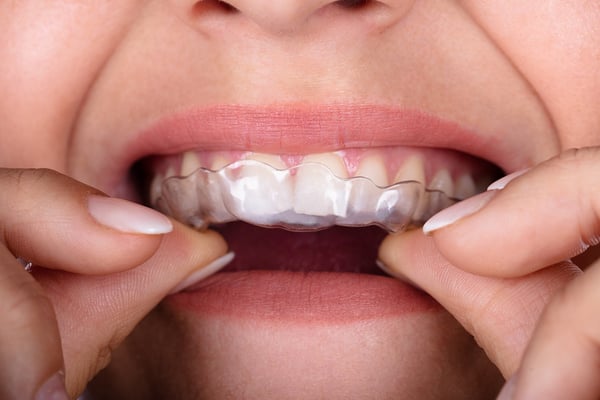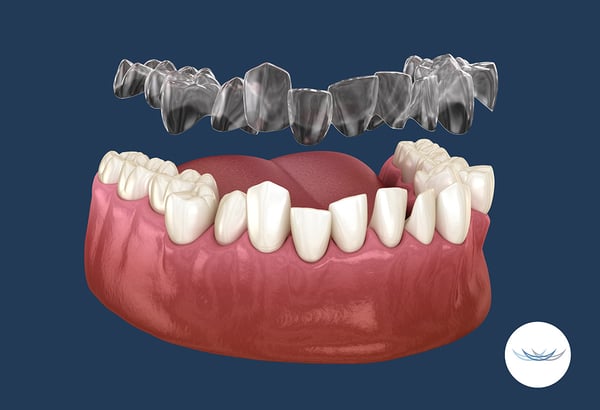Refinement...Friend or Foe? Part 1 of 2
by Dr. Jorge Perez, on 2/9/21 1:07 PM
Wherever your clear aligner learning curve or experience is, I trust that at some point you have experienced somehow the need for refinement.

What is a Refinement?
Refinement in clear aligner therapy is a very common procedure that consists of ordering new aligners when the current set of aligners do not fit due to teeth not "tracking" or following the movements as predicted. Refinements delay patient’s ortho progress, require more chair time, and extra planning and production from Six Month Smiles. Refinements therefore could be perceived as negative or not desirable, but with careful case planning, monitoring, and execution, the need for refinements can be minimized.
Why Do We Need Refinements?
To understand the need for refinements, we must understand the nature of movements with aligner therapy; the digital planning, the material, and all variables that will impact the predictability of the movements prescribed on each tooth. Let us review some of these factors and how you can influence them.

Tooth Movements. Teeth can de-rotate, extrude, intrude, procline, torque, bodily move, etc at a rate of 0.2 mm of linear movement or 2 degrees per aligner approximately 2 weeks at a time. Predictability to achieve the desired outcome will depend on how well each tooth responds to the forces programmed within each aligner. Some movements will be more predictable than others. Any movement that involves the apex moving through the bone will be more complex and therefore more unpredictable.
COMPLEX movements:
- Protraction
- Retraction (bodily movements)
- Lingual
- Palatal Root Torque
- Mesio-distal Root Torque

Sample treatment plan identifying “Difficult Movements”
Digital Planning. The digital staging will also play a massive part in the predictability of the movements expected. Correct sequence & tooth movement protocols and correct use of features like attachments have a great impact on predictability. 6MS implements sophisticated protocols in aligner planning, so complex that it cannot be outsourced to machines. We instead train orthodontists with years of planning experience to blend their understanding of biomechanics with our protocols in aligner planning to produce cases that have a high degree of predictability.
Aligner Material. Working with a material that provides continuous forces for a long period of time will ensure high levels of predictability. The plastic used when manufacturing the aligners must have a long-life span, that is provide at least 14 days of continuous forces to the teeth without relaxing (stretching out). Plastics that relax sooner than 14 days potentially create minor relapse within the treatment, creating lack of predictability and therefore need of refinement. Six Month Smiles uses Zendura® material, which is known for its resilience for its aligners and comfort for the patient.
Patient Compliance. The fact that aligners can be removed is convenient for the patient but also serves as a detriment to treatment predictability. Patients who leave their aligners out for long intervals (more than 4 hours) will impact successful tooth movement. Wearing aligners less than 2 weeks will not allow the bone and periodontal ligaments to remodel fully as expected within that stage.
We recommend requiring your patients to bring in their previous aligners to the office. Inspect the old aligners. If they are shiny and new, without signs of stain or wear, it’s time to have an honest conversation with the patient about compliance. Remind your patients that compliance is one of the most important factors that affect treatment outcome.
Other Factors to Consider
Patient Age. Age of the patient will also contribute/affect the predictability of movements. The cellular process and the speed of the bone remodeling system will decrease as we grow older and the bone around the roots will become dense. In older patients, the clinical crowns could be smaller and smaller crowns will make the root control more difficult. When you see a complex case with an older patient, you should think on the prognosis and the likelihood of refinement. We will be able to advise on suitability and predictability on a case by case basis.
Attachment Placement & IPR. Correct attachment placement and IPR execution are factors that you control, and they greatly affect predictability.
Excessive composite flash will separate the aligner from the tooth surface, not delivering the forces correctly. Attachment bonding requires some patience and skill. We have prepared videos, instructions, and a troubleshooting guide to help. We recommend reviewing these resources to improve attachment bonding.
Insufficient or excessive IPR greatly affects whether an aligner case stays on-track. It is very important to note that when compared with braces, aligners are far more sensitive to IPR variability. The reason for this difference is how teeth are controlled. With braces, and particularly with round wires used by 6MS, teeth have some freedom to procline/retrocline in response to forces applied by the archwire. Aligners, by contrast, fully encapsulate a tooth. If there is insufficient IPR, the tooth has nowhere to go so either the tooth does not move, or it moves in an unpredictable way (i.e. intrudes). Either way, the case is at risk of going off-track. In our experience, we see many more incidences of insufficient IPR than excessive IPR so let us just focus on the latter. The ideal way to ensure that sufficient IPR is delivered is to check interproximal contact points at each appointment and break tight contacts between teeth that are supposed to move. Some contact may require slight relief to allow tooth movement even if IPR was not prescribed.
Refinement Summary
- A refinement is typically ordered towards end of treatment.
- The purpose of refinement is to achieve tooth movements that did not track as predicted.
- A successful aligner treatment will depend on the successful movement of all teeth on each stage. As we start the therapy, we need to achieve all movements programmed for each tooth on each aligner successfully before we move on to the next.
- Any variables that stop any tooth from moving predictably within a stage will contribute to the need of refinement.
- Refinements are only meant to course correct and deliver the results that were within the original approved treatment plan.
We hope that this blog gives you some insight on factors that affect refinements and what you can do to ensure your aligner cases stay on track. Part 2 of this series will review examples of movements that may require refinement and why.





